#Flugzeugwerke
Explore tagged Tumblr posts
Text
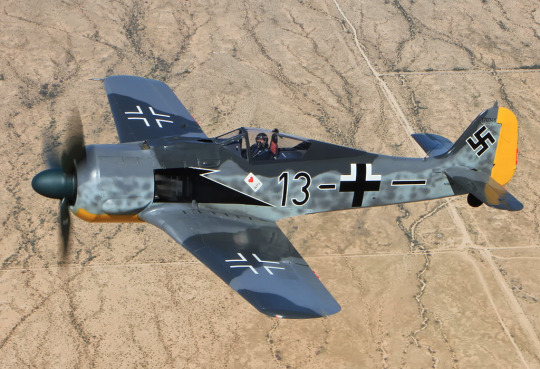
1943 Arado Flugzeugwerke FW-190 A-5 long range night fighter bomber aircraft over Casa Grande, Az
#Flugzeugwerke#FW-190#A-5#JaBo Rei#Night fighter#Fighter Bomber#attack aircraft#Luftwaffe#Vintage aircraft#Würger#warbird#airplane#aircraft#plane
135 notes
·
View notes
Photo

Das Logo der Dornier Flugzeugwerke zeigt eine Flugzeugkabine in Form eines D. Es symbolisiert Innovation und Fortschritt im deutschen Flugzeugbau. Den ganzen Artikel gibt es hier: https://nordischepost.de/unterhaltung/design/dornier-flugzeugwerke-das-design-des-deutschen-flugzeugherstellers/?feed_id=66245&_unique_id=6626bfb995f89
#Design#Das#des#deutschen#deutscherFlugzeughersteller#Dornier#DornierFlugzeugwerke#Flugzeugherstellers#Flugzeugwerke#Logo
1 note
·
View note
Text

The Bf 109 in a desert camouflage (I don't know the artist on this one). Bf stood for Bayerische Flugzeugwerke, the name of the company that the plane was designed and built by.
Willi Messerschmitt later renamed the company to Messerschmitt AG and so planes that came off the production line after that point had the prefix Me as opposed to Bf. As far as I know there was never officially any Me 109's but the Allies may have called it that at times.
22 notes
·
View notes
Text

Pfalz-Flugzeugwerke
4 notes
·
View notes
Text

Messerschmitt Bf109 G-6 “Black 8” S/N 440738, was built by Wiener Neustädter Flugzeugwerke in 1944 and is reportedly the only original, airworthy example of the type in existence.
@ron_eisele via X
29 notes
·
View notes
Text
Adi Pic of the Day 📸
Adolf HitIer with Willy Messerschmitt (second from left) visiting the Bayerische Flugzeugwerke (BFW) factory in Augsburg on 21 November 1937. Wilhelm Emil "Willy" Messerschmitt was a German aircraft manufacturer who designed the Messerschmitt Bf 109, which became the most important fighter aircraft in the Luftwaffe. ✈️

32 notes
·
View notes
Photo
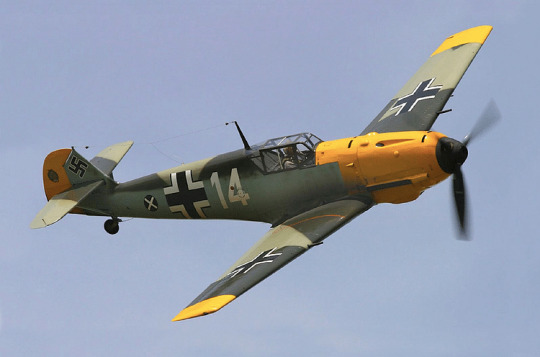
Messerschmitt Bf 109
The Messerschmitt Bf 109, also known as the Me 109, was Germany's most important single-seater fighter plane throughout the Second World War (1939-45). Produced in greater numbers than any other German plane, the fighter was a match for the RAF's Supermarine Spitfire in the Battle of Britain and was employed on a range of fronts from North Africa to Russia.
Design
The Messerschmitt Bf 109 was the second monoplane design of Wilhelm ("Willy") Messerschmitt (1898-1978). The "Bf" refers to the Bayerische Flugzeugwerke company, which made the planes and where Messerschmitt was the chief designer. In the mid-1930s, a single-seater fighter project was set up by the German government to find the best possible design for an airplane that would become one of the most important aircraft of the Luftwaffe (the German airforce). Also known as the Me 109, Messerschmitt's design won the contract, beating other established manufacturers like Arado, Focke-Wulf, and Heinkel. The latter company did impress with its Heinkel 112, and so the state ordered ten prototypes of this plane as well as ten of the Me 109.
The prototype Me 109s had British Rolls-Royce engines and the plane impressed at trials in Augsburg in September 1935. The first production models had a Junkers Jumo 210A engine. The German public got its first view of the Me 109 in a procession at the Berlin Olympic Games in the summer of 1936. In the spring of 1937, the first planes were operational. The Jumo engine was upgraded several times, and the aircraft saw their first military action in the Spanish Civil War (1936-9). Willy Messerschmitt took over the Bayerische Flugzeugwerke in July 1938 as Germany geared up its armaments manufacturing ready for war. The company was renamed Messerschmitt AG, and by September around 600 of the fighters had been built. Some planes had a superior Daimler-Benz engine fitted early on, and by 1939, this became the standard. By the end of 1939, the Luftwaffe had some 2,000 Me 109s at its disposal. By 1940, over 150 of the fighters were rolling off the production line each month. The plane was continually developed throughout the war in attempts to increase performance, stability, and firepower. In total, some 35,000 Me 109s were built.
A two-seater version of the Me 109, the Bf 109G-12, was used for training purposes. Besides the Luftwaffe, the fighter plane was flown by the air forces of Italy, Switzerland, Spain, Bulgaria, Croatia, Finland, and Hungary, amongst others.
Continue reading...
21 notes
·
View notes
Text
Hans-Ulrich Rudel (1916 – 1982) was a German ground-attack pilot during World War II and a post-war neo-Nazi activist.
The most decorated German pilot of the war and the only recipient of the Knight's Cross with Golden Oak Leaves, Swords, and Diamonds, Rudel was credited with the destruction of 519 tanks, one battleship, one cruiser, 70 landing craft and 150 artillery emplacements. He claimed nine aerial victories and the destruction of more than 800 vehicles. He flew 2,530 ground-attack missions exclusively on the Eastern Front, usually flying the Junkers Ju 87 "Stuka" dive bomber.
Rudel surrendered to US forces in 1945 and immigrated to Argentina. An unrepentant Nazi, he helped fugitives escape to Latin America and the Middle East, and sheltered Josef Mengele, the former SS doctor at Auschwitz. He worked as an arms dealer to several right-wing regimes in South America, for which he was placed under observation by the US Central Intelligence Agency.
After the 1955 military coup d'etat that deposed constitutional president Juan Perón, Rudel moved to Paraguay, where he acted as a foreign representative for several German companies.
Rudel was released in April 1946 and went into private business. In 1948, he emigrated to Argentina via the ratlines, travelling via the Austrian Zillertal to Italy. In Rome, with the help of South Tyrolean smugglers, and aided by the Austrian bishop Alois Hudal, he bought himself a fake Red Cross passport with the cover name "Emilio Meier", and took a flight from Rome to Buenos Aires, where he arrived on 8 June 1948. Rudel authored books on the war, supporting the regime and attacking the Oberkommando der Wehrmacht for "failing Hitler".
In the 1950s, Rudel befriended Savitri Devi, a writer and proponent of Hinduism and Nazism, and introduced her to a number of Nazi fugitives in Spain and the Middle East.
With the help of Perón, Rudel secured lucrative contracts with the Brazilian military. He was also active as a military adviser and arms dealer for the Bolivian regime, Augusto Pinochet in Chile and Stroessner in Paraguay. He was in contact with Werner Naumann, formerly a State Secretary in Goebbels' Ministry of Public Enlightenment and Propaganda in Nazi Germany.
Following the Revolución Libertadora in 1955, a military and civilian uprising that ended the second presidential term of Perón, Rudel was forced to leave Argentina and move to Paraguay. During the following years in South America, Rudel frequently acted as a foreign representative for several German companies, including Salzgitter AG, Dornier Flugzeugwerke, Focke-Wulf, Messerschmitt, Siemens and Lahmeyer International, a German consulting engineering firm.
Rudel died of a stroke.
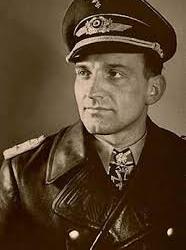
10 notes
·
View notes
Text
Halberstadt
Halberstadt ist eine Stadt in Sachsen-Anhalt mit etwa vierzigtausend Einwohnern. Es liegt im Harzvorland und ist sehr alt - es war Mitglied der Hanse. Im 18. Jahrhundert war die jüdische Gemeinde der Stadt eine der größten und bedeutendsten in Mitteldeutschland, und Juden war etwa ein Zehntel der Stadtbevölkerung. Die Gemeinde hatte eine unglaublich schöne Barocksynagoge. Die historische Stadtzentrum von Halberstadt wurde im Zweiten Weltkrieg zerstört, nachdem die örtlichen Führer sich weigerten, sich zu ergeben. Zuvor war die Stadt ein Zentrum für die Flugzeugproduktion: die Firma Halberstädter Flugzeugwerke produzierte Flugzeuge für die Fliegertruppe des Deutschen Heeres. Auch während des Zweiten Weltkriegs produzierte die Stadt Militärflugzeuge. Viele Gebäude wurde später wiederhergestellt. Manche Sehenswürdigkeiten in Halberstadt sind der Dom und der Domschatz, das Gleimhaus (ein Literaturmuseum), das Berend-Lehmann-Museum für jüdische Geschichte und Kultur, und die Höhlenwohnungen Langenstein. Seit September 2001 wird in der St.-Buchardi-Kirche in Halberstadt das langsamste und längstandauernde Musikstück der Welt.



#langblr#learning languages#language learning#learning german#german language#germanblr#halberstadt#sachsen-anhalt#sachsen anhalt#germany#agtew
8 notes
·
View notes
Text

A German Focke-Wulf Fw 190A shoots down a USAAF B-17G Flying Fortress during the attack on the AGO Flugzeugwerke Aircraft factory at Oschersleben, Germany. 11 January 1944
41 notes
·
View notes
Text

FW-190 over Casa Grande, Arizona
158 notes
·
View notes
Text
Werner Voss - Part 2
When Voss returned to the front in May, the playing field was more level. Before this, German aircrafts were far superior to British and French ones. Now, the Entente had improved aircrafts, such as the SE5, which could more than compete with the German Albatros D.III and D.V. Voss shot down his first SE5 on May 7th, 1917. He continued scoring during early summer and his reputation as one of the best fighter pilots alive (bested only by Manfred von Richthofen) was established.
An interesting aspect of Voss´s personality was that he was not limited by rank. In the German army (as with most armies of the time), officers usually did not consort with the lower ranks. Voss was an officer, and one who had received the highest award possible, but he distanced himself from the circle of COs. Instead, he spent a lot of time with mechanics he had befriended and helped repair his own airplanes. His youth and middle-class upbringing most likely influenced this behavior. One of his past times was working on and riding his motorcycle.

Voss’s behavior was somewhat controversial. It is suspected that he fell foul of several higher ranked officers because he had trouble accepting the authority of those he disagreed with. He even tried to get his CO removed because he thought the man was not daring enough and unworthy to lead as venerated a unit as Jasta Boelcke. Voss was subsequently appointed Staffelführer of Jasta 5. Here again, speculations come up about Voss being purposely held back to let Richthofen be the shining star, but this should be dismissed as unfounded rumors spread by people who dislike MvR.
Though Voss was by his own admission no great leader, he did well in Jasta 5. With his colorfully painted Albatross D.III, he patrolled over the lines, raising his victory score to 30 by June.
On June 28th, 1917, Voss became Staffelführer of Jasta 29. But this only lasted five days as he was called by Manfred von Richthofen to take over Jasta 14 and then Jasta 10 of JG1, Richthofen’s famous Jagdgeschwader. Again, Voss had trouble adjusting to his commanding role. All he wanted to do was fly and fight, not do administrative work more than anything else. So, he appointed an assistant to do that for him.
During the summer of 1917, Voss continued to score victories without sustaining any injuries. By the end of August he had added eight more, bringing his total to 38.
At the end of August, Voss went on leave again. After a close call with a British pilot which he barely escaped, Voss is said to have been very stressed and nervous. After spending a few days at home in Krefeld, he visited the Fokker Flugzeugwerke in Schwerin to test-fly a new model. Upon his return, he would add ten more victories to his score before his luck finally ran out.
His demise is famous across nations. His skill and tenacity are mentioned whenever war aviation is the topic.
On September 23rd, 1917, Voss set out on a hunt for enemies by himself. Soon he shot down a bomber plane, killing the two occupants. It was to be his final victory. He returned to his airfield, greeted by his two brothers who had come to visit. They ate lunch and took a picture together, the last one of Voss alive.
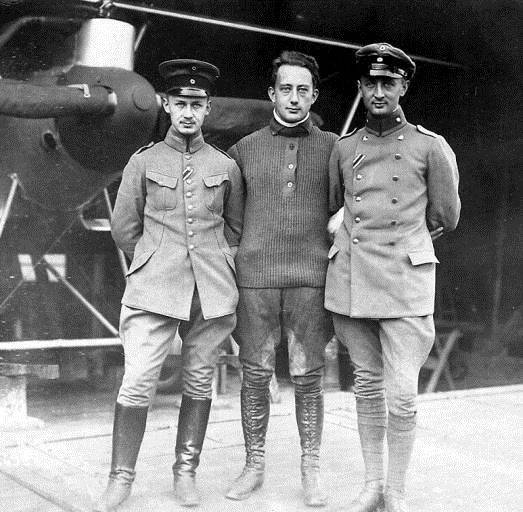
At around 5 p.m. Voss took off again on his final patrol. He was with other pilots from the unit, but Voss was able to climb quicker than the rest and his comrades soon lost sight of him. Meanwhile, on the other side of the lines, the British 56 Squadron went up with the same intentions as Jasta 10. Inevitably, the parties met and engaged in the greatest air battle of WWI. It is still unclear what is truth and what is fiction of the many retellings of this fight. But one thing is clear: Werner Voss saw the enemy aircraft far outnumbering him and instead of turning around, he confronted them head-on and was able to damage every single plane before being killed. After around 10 minutes of intense fighting with at least six enemies, Voss's airplane reportedly dropped suddenly and crashed.
His death was attributed to Arthur Rhys Davis, though there is still some doubt as to who was truly responsible.
Voss’s final fight is an interesting contrast to one of Richthofen’s. MvR and several comrades encountered a lone enemy, but instead of them all attacking him, only Richthofen fought while his comrades held back and ensured no other enemy pilot approached. If only the British had acted that way in Voss’s last fight.
"I shall never forget my admiration for that German pilot, who single handed, fought seven of us for ten minutes . . . I saw him go into a fairly steep dive and so I continued to watch, and then saw the triplane hit the ground and disappear into a thousand fragments, for it seemed to me that it literally went into powder." James McCudden
"His flying was wonderful, his courage magnificent and in my opinion he is the bravest German airman whom it has been my privilege to see fight." James McCudden
"If I could only have brought him down alive..." Arthur Rhys Davis
He was buried where he crashed but subsequent fighting in the area quickly made it impossible to find his grave. He is honoured on the wall of the Soldatenfriedhof at Langemark.

RIP Werner Voss (1897 – 1917)
Sources:
September Evening: The Life and Final Combat of the German World War One Ace Werner Voss, by Barry Diggens 2003
Unter the Guns of the German Aces, by Norman Franks and Hal Giblin 1997
My thanks to @ivy-and-edelweiss for proof reading and correcting my terrible grammar when neccessary!
27 notes
·
View notes
Text
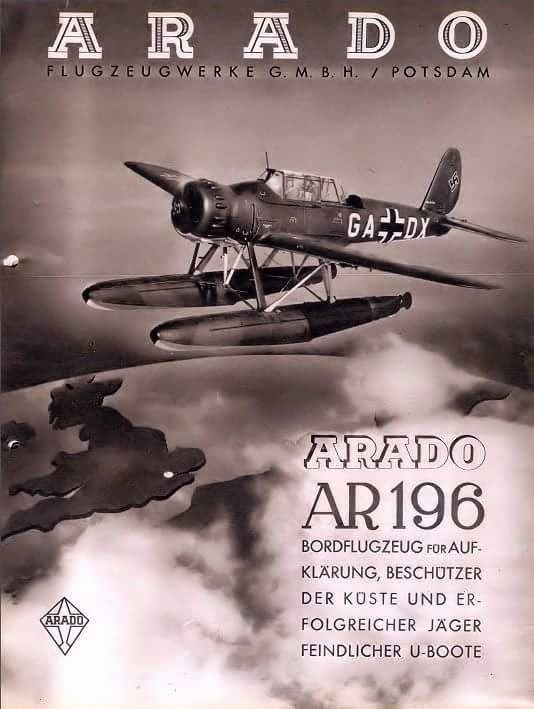
Period Arado Flugzeugwerke GmbH advertisement for the Ar 196, arguably the best floatplane of the war. Text reads "ON-BOARD AIRCRAFT FOR RECONNAISSANCE, PROTECTION OF THE COAST AND SUCCESSFUL HUNTER OF ENEMY SUBMARINES". Date unknown. For more, see my Facebook group - Eagles Of The Reich
#germany#ww2#luftwaffe#ww2 aircraft#arado#ar 196#arado flugzeugwerke#german ww2 float planes#kriegsmarine
42 notes
·
View notes
Text
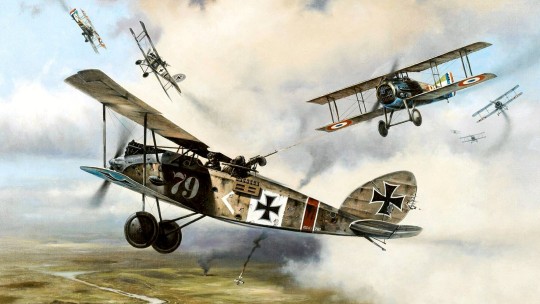
1917 10 The Forge - Heinz Krebs
High above the trenches on the Western Front, German aviator Gustav Boehl and his gunner are engaged in mortal combat as their Halberstadt CL II comes under attack from French Spads. It's the dawn of a new age in military history, and a new weapon is being forged, the aerial force. In the late stages of World War One German military commanders recognized a growing necessity for the close protection of reconnaissance and artillery control aircraft. As a result the so-called "Schutzstaffeln" (protection units) came into beingThe typical aircraft model used by such units were "C" type aircraft which were subsequently replaced by lighter machines known as "CL" type aeroplanes. Popular manufacturers of CL types were the "Hannoversche Waggonfabrik" and the "Halberstaedter Flugzeugwerke" as well as, later in the war, the Junkers aircraft company.Although aircraft made by the "Hannoversche Waggonfabrik" were designed by German aviation pioneer Claude Dornier, they weren't near as popular with German combat crews as the aircraft made by the "Halberstaedter Flugzeugwerke". Due to their agility and speed, their airplanes, only slightly larger dimensioned than single seat fighters, were especially well suited for use with the "Schutzstaffeln".On October 13th, 1917 Gustav Boehl was transferred from the military flight training unit "Armeeflugpark 4" to the front line unit "Schutzstaffel 19", where he served as a combat pilot in the rank of a Sergeant. "Schutzstaffel 19" was renamed "Schlachtstaffel 19" (Schlasta 19) on March 27th, 1918. The "Schlachtstaffeln" are commonly regarded as the forerunner of the fighter bomber units in later years of military aviation history.In the spring of 1918 such a "Schlachtstaffel" would have typically consisted of six aircraft, mostly either Halberstadt CL IIs or CL IVs. The units were commanded by a Lieutenant or First Lieutenant, himself not necessarily a pilot. The pilots were routinely non-commissioned officers, the gunners normally being corporals or privates. These gunners were often able to master more than just their close support routine. This was impressively demonstrated by one of their ranks, Gottfried Ehmann who managed to down a total of 12 attacking fighter aircraft during the course of his military carreer.
27 notes
·
View notes
Text













Albatros D.V is a fighter aircraft of the German aircraft manufacturer Albatros Flugzeugwerke. It was the final development of the Albatros D.I family and the last Albatros fighter to see operational service with the Luftstreitkräfte during the First World War. Approximately 4,800 Albatros fighters of all types were built during World War I. They were used extensively by the German Air Service throughout 1917, and remained in action in considerable numbers until the end of the war. Many of the highest-scoring German aces achieved the majority of their victories while flying Albatros fighters.
49 notes
·
View notes
Text

Bf 109 outside Wiener Neustadter Flugzeugwerke factory
@ron_eisele via X
10 notes
·
View notes